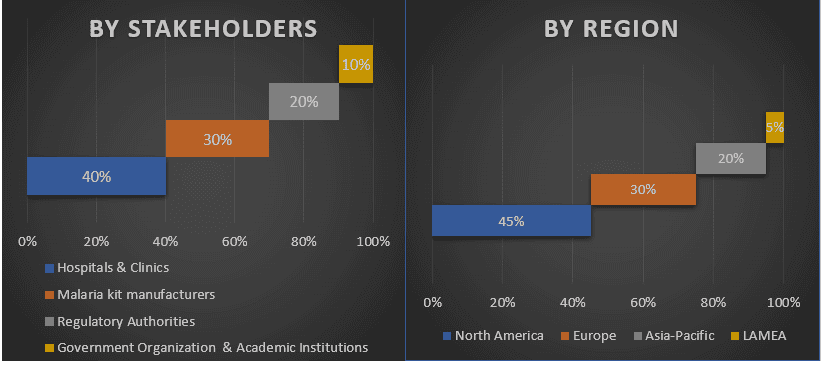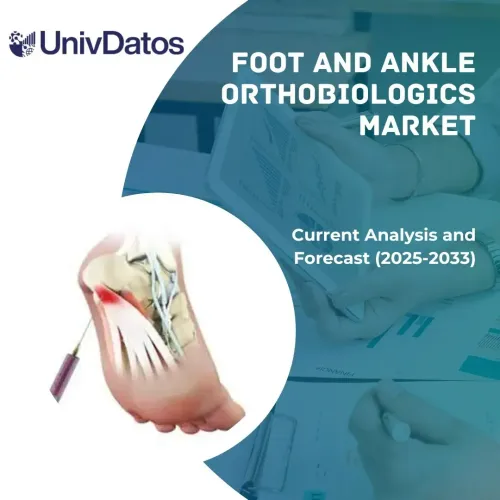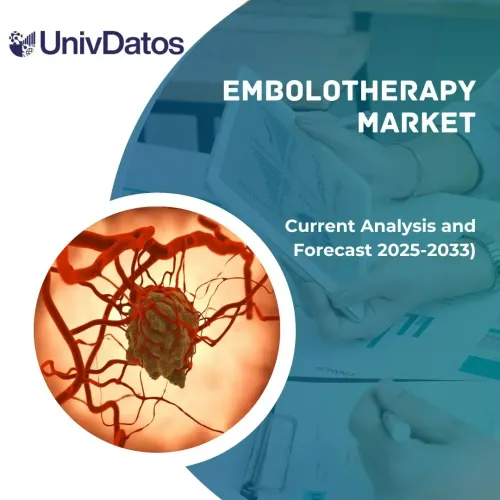Рынок средств диагностики малярии: текущий анализ и прогноз (2021-2027)
Акцент на технологиях (быстрые диагностические тесты (RDTs), ПЦР, микроскопия, ELISA и прочее); конечные пользователи (больницы, клиники и диагностические лаборатории); регион/страна

ЗАПРОСИТЬ БЕСПЛАТНЫЙ ОБРАЗЕЦ PDF
Ожидается, что рынок средств диагностики малярии будет расти с повышенным среднегодовым темпом роста около 5% в течение прогнозируемого периода (2021–2027 гг.). Надлежащее лечение малярии недоступно во многих частях мира, и люди продолжают умирать из-за этого паразитарного заболевания. Отсутствие надлежащих методов диагностики является одной из основных причин смертности в таких регионах.
Быстрое развитие технологий и повышение осведомленности населения о серьезности заболевания, а также непрерывный рост числа случаев малярии в тропических и субтропических регионах значительно увеличивают рынок средств диагностики малярии. Кроме того, государственные инициативы по борьбе с малярией повышают спрос на надлежащие методы диагностики. Например, правительство Индии запустило Национальную программу по ликвидации малярии в Индии (2016–2030 гг.), в которой изложена стратегия Индии по ликвидации заболевания к 2030 году. Программа была разработана с целью ликвидации малярии в стране и содействия улучшению здоровья и качества жизни и снижению уровня бедности.
Access Bio., Inc., Abbott Laboratories, Premier Medical Corporation Pvt. Ltd., Sysmex Partec GmbH, bioMérieux, Beckman Coulter, Inc., Siemens Healthineers, Leica Microsystems GmbH, Nikon Corporation и Olympus Corporation являются одними из ведущих игроков, работающих на рынке средств диагностики малярии. Эти игроки предпринимают несколько слияний и поглощений, а также партнерств, чтобы предоставить клиентам новые разновидности устройств для диагностики малярии.
Аналитические выводы, представленные в отчете
«Среди технологий сегмент ПЦР занимает основную долю»
На основе технологий рынок сегментирован на экспресс-тесты (RDTs), ПЦР, микроскопию, ELISA и другие. Ожидается, что сегмент ПЦР будет иметь прибыльную долю рынка в течение прогнозируемого периода из-за увеличения инвестиций в исследования и разработки более совершенных методов молекулярной диагностики в сочетании с частыми запусками продуктов. Например, в 2020 году был разработан PathoDetect Malaria Screening Kit для диагностики малярийного паразита с помощью RT-PCR. Это стандартизованный анализ RT-PCR с высокой точностью и комбинацией проверенных праймеров, гидролизных зондов и горячего старта ДНК-полимеразы, гарантирующий, что набор приводит к высокоспецифичным и сверхчувствительным результатам за один шаг.
«Среди конечных пользователей основную долю занимает больничный сегмент»
На основе конечных пользователей рынок сегментирован на больницы, клиники и диагностические лаборатории. Больничный сегмент захватил значительную долю рынка в 2020 году, и ожидается, что в ближайшие годы он будет расти быстрыми темпами из-за быстрого увеличения гериатрического населения и роста распространенности различных хронических заболеваний. Пожилые люди наиболее восприимчивы к малярии, и в этой возрастной группе она может быть более смертельной. Например, по данным ВОЗ, в период с 2015 по 2050 год доля населения мира старше 60 лет увеличится почти вдвое: с 12% до 22%.
«MEA представляет собой один из крупнейших рынков средств диагностики малярии»
Для лучшего понимания динамики рынка средств диагностики малярии был проведен подробный анализ для различных регионов по всему миру, включая Северную Америку (США, Канада), Европу (Германия, Франция, Италия, Испания, Великобритания и остальная Европа), Азиатско-Тихоокеанский регион (Китай, Япония, Индия и остальная часть АТР), Латинскую Америку и Ближний Восток и Африку (LAMEA). В 2020 году на MEA приходилась значительная доля рынка средств диагностики малярии, и ожидается, что она также вырастет в течение прогнозируемого периода. Национальные и международные усилия по ликвидации малярии в регионе способствовали росту рынка средств диагностики малярии. Например, УВКБ ООН запустило план действий по борьбе с малярией для мира, свободного от малярии, который в основном нацелен на Африку из-за наибольшего числа случаев малярии. Глобальный план действий по борьбе с малярией будет направлять и объединять усилия сообщества по борьбе с малярией, чтобы своевременно и эффективно оказывать помощь эндемичным странам при достаточном финансировании и политической поддержке.
Причины купить этот отчет:
- Исследование включает в себя анализ размера рынка и прогнозирования, подтвержденный аутентифицированными ключевыми экспертами отрасли
- Отчет представляет собой краткий обзор общей производительности отрасли с первого взгляда
- Отчет охватывает углубленный анализ видных представителей отрасли с основным упором на ключевые финансовые показатели бизнеса, портфель продуктов, стратегии расширения и последние разработки
- Подробное изучение движущих сил, ограничений, ключевых тенденций и возможностей, преобладающих в отрасли
- Исследование всесторонне охватывает рынок по различным сегментам
- Углубленный анализ отрасли на региональном уровне
Варианты настройки:
Рынок средств диагностики малярии может быть дополнительно настроен в соответствии с требованиями или любым другим сегментом рынка. Кроме того, UMI понимает, что у вас могут быть свои собственные бизнес-потребности, поэтому не стесняйтесь обращаться к нам, чтобы получить отчет, который полностью соответствует вашим требованиям.
Содержание
Методология исследования анализа рынка средств диагностики малярии (2021–2027 гг.)
Анализ исторического рынка, оценка текущего рынка и прогнозирование будущего рынка средств диагностики малярии были тремя основными этапами, предпринятыми для создания и анализа внедрения средств диагностики малярии в основных регионах мира. Было проведено тщательное вторичное исследование для сбора исторических данных о рынке и оценки текущего размера рынка. Во-вторых, для подтверждения этих выводов было принято во внимание множество результатов и предположений. Кроме того, были проведены подробные первичные интервью с отраслевыми экспертами по всей цепочке создания стоимости рынка средств диагностики малярии. После предположений и подтверждения данных о рынке посредством первичных интервью мы использовали нисходящий/восходящий подход для прогнозирования полного размера рынка. После этого были приняты методы разбивки рынка и триангуляции данных для оценки и анализа размера рынка сегментов и подсегментов, к которым относится отрасль. Подробная методология поясняется ниже:
Узнайте больше о методологии исследования
Анализ исторического размера рынка
Этап 1. Углубленное изучение вторичных источников:
Было проведено детальное вторичное исследование для получения исторических данных о размере рынка средств диагностики малярии с помощью внутренних источников компании, таких как годовой отчет и финансовая отчетность, презентации результатов деятельности, пресс-релизы и т. д., и внешних источников, включая журналы, новости и статьи, правительственные публикации, публикации конкурентов, отраслевые отчеты, базы данных третьих сторон и другие надежные публикации.
Этап 2: Сегментация рынка:
После получения исторических данных о размере рынка средств диагностики малярии мы провели подробный вторичный анализ для сбора исторических данных о рынке и доле различных сегментов и подсегментов для основных регионов. Основные сегменты, включенные в отчет, касаются технологий и конечных пользователей. Кроме того, был проведен анализ на уровне стран для оценки общего внедрения средств диагностики малярии во всем мире.
Этап 3: Факторный анализ:
После получения исторических данных о размере рынка различных сегментов и подсегментов мы провели подробный факторный анализ для оценки текущего размера рынка средств диагностики малярии. Кроме того, мы провели факторный анализ с использованием зависимых и независимых переменных, таких как рост числа людей с хроническими заболеваниями и увеличение числа пожилых людей во всем мире. Был проведен тщательный анализ сценариев спроса и предложения с учетом основных партнерств, слияний и поглощений, расширения бизнеса и запуска продуктов в секторе средств диагностики малярии во всем мире.
ЗАПРОСИТЬ ИНДИВИДУАЛЬНУЮ НАСТРОЙКУ
Оценка текущего размера рынка и прогноз
Определение текущего размера рынка: на основе практически применимых данных, полученных на основе вышеуказанных 3 этапов, мы определили текущий размер рынка, ключевых игроков на рынке средств диагностики малярии и доли рынка сегментов. Все необходимые процентные доли и разбивки рынка были определены с использованием вышеупомянутого вторичного подхода и были проверены посредством первичных интервью.
Оценка и прогнозирование: для оценки и прогнозирования рынка различным факторам были присвоены веса, включая движущие силы и тенденции, ограничения и возможности, доступные для заинтересованных сторон. После анализа этих факторов были применены соответствующие методы прогнозирования, т. е. нисходящий/восходящий подход, чтобы получить прогноз рынка примерно на 2027 год для различных сегментов и подсегментов на основных рынках по всему миру. Методология исследования, принятая для оценки размера рынка, включает:
- Размер рынка отрасли в стоимостном выражении (доллары США) и уровень внедрения средств диагностики малярии на основных рынках внутри страны
- Все процентные доли, разбивки и деления сегментов и подсегментов рынка
- Ключевые игроки на рынке средств диагностики малярии с точки зрения предлагаемой продукции. Кроме того, стратегии роста, принятые этими игроками для конкуренции на быстрорастущем рынке
Подтверждение размера и доли рынка
Первичное исследование: были проведены углубленные интервью с ключевыми лидерами мнений (KOL), включая руководителей высшего звена (CXO/вице-президенты, руководители отделов продаж, руководители отделов маркетинга, руководители операционных отделов и региональные руководители, руководители стран и т. д.) в основных регионах. Затем были обобщены результаты первичных исследований и проведен статистический анализ для доказательства заявленной гипотезы. Данные, полученные в результате первичных исследований, были объединены с данными вторичных исследований, что превратило информацию в практически применимые данные.
Разделение участников первичного исследования по различным регионам

Конструирование рынка
Для завершения общей оценки рынка и получения точных статистических данных по каждому сегменту и подсегменту рынка средств диагностики малярии был использован метод триангуляции данных. После изучения различных параметров и тенденций в областях типа продукта и применения средств диагностики малярии данные были разделены на несколько сегментов и подсегментов.
Основная цель исследования рынка средств диагностики малярии
В ходе исследования были точно определены текущие и будущие рыночные тенденции средств диагностики малярии. Инвесторы могут получить стратегические аналитические данные, чтобы основывать свои решения об инвестициях на качественном и количественном анализе, проведенном в исследовании. Текущие и будущие рыночные тенденции определили общую привлекательность рынка на региональном уровне, предоставив платформу для участника отрасли для использования неосвоенного рынка, чтобы получить выгоду в качестве преимущества первопроходца. Другие количественные цели исследований включают:
- Анализ текущего и прогнозного размера рынка средств диагностики малярии в стоимостном выражении (доллары США). Кроме того, анализ текущего и прогнозного размера рынка различных сегментов и подсегментов
- Сегменты в исследовании включают области технологий и конечных пользователей
- Определение и анализ нормативно-правовой базы для индустрии средств диагностики малярии
- Анализ цепочки создания стоимости, связанной с присутствием различных посредников, а также анализ поведения клиентов и конкурентов в отрасли
- Анализ текущего и прогнозного размера рынка средств диагностики малярии для основного региона
- Основные регионы, изученные в отчете, включают Северную Америку, Европу, Азиатско-Тихоокеанский регион и страны Латинской Америки, Ближнего Востока и Африки (LAMEA).
- Профили компаний рынка средств диагностики малярии и стратегии роста, принятые участниками рынка для поддержания устойчивости на быстрорастущем рынке
- Углубленный анализ отрасли на региональном уровне
Связанные Отчеты
Клиенты, купившие этот товар, также купили










